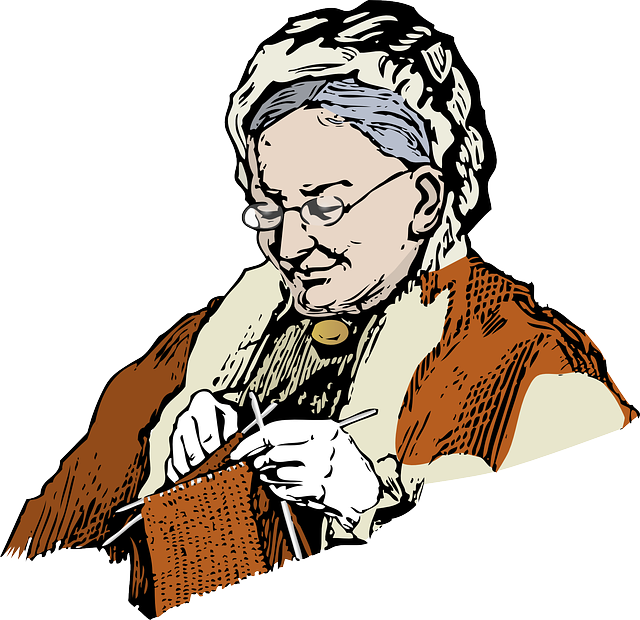Category: Elderly Companion Services
Introduction
The aging population presents a unique set of challenges and opportunities, particularly in the realm of elderly companion services. These services are designed to offer companionship, support, and care to seniors who may be experiencing isolation, mobility issues, or other age-related challenges. This comprehensive article will delve into the multifaceted world of elderly companion services, exploring their significance, global impact, economic considerations, technological advancements, policy frameworks, challenges, case studies, and future prospects. Readers will gain a nuanced understanding of how these services can enhance the lives of the elderly and the role they play in our society.
Understanding Elderly Companion Services
Elderly companion services encompass a range of support options for seniors, including social companionship, domestic assistance, personal care, health monitoring, and transportation. These services are tailored to meet the diverse needs of the aging population, aiming to maintain their independence, improve their quality of life, and provide peace of mind to families. The core components of these services include:
- Social Engagement: Encouraging interaction with others to prevent loneliness and depression.
- Daily Living Assistance: Aiding with tasks such as meal preparation, grooming, and medication management.
- Health Monitoring: Tracking health status and alerting medical professionals if necessary.
- Mobility Support: Assisting with mobility devices or providing transportation to appointments.
Historically, elderly companion services have evolved from informal family care to structured professional services, reflecting changing demographics and social attitudes towards aging and eldercare.
Global Impact and Trends
The impact of elderly companion services is felt across the globe as populations age at an unprecedented rate. The United Nations estimates that by 2050, the proportion of world inhabitants over 60 years will be larger than the proportion of youths under 15. Key trends influencing this sector include:
- Technological Integration: The use of telehealth and monitoring devices to provide care remotely.
- Personalization: Customized services based on individual needs and preferences.
- Regional Variations: Different models of service provision, influenced by cultural attitudes and economic factors.
Developed countries like Japan and the United States have a higher prevalence of these services due to their aging populations, while emerging economies are rapidly scaling up their offerings in response to similar demographic shifts.
Economic Considerations
The economic landscape of elderly companion services is complex, with several market dynamics at play:
- Demand and Supply: An increasing demand for services due to aging populations and a growing supply of providers adapting to this need.
- Investment Patterns: Investments in technology and training to improve service quality and efficiency.
- Economic Systems: The role of government funding, insurance coverage, and private investments in shaping access to services.
These economic factors not only determine the availability and cost of services but also influence the overall health and sustainability of the elderly companion services industry.
Technological Advancements
Technology has become a cornerstone in the evolution of elderly companion services. Significant advancements include:
- Wearable Devices: GPS-enabled watches or bracelets that can alert caregivers if the wearer falls or is in distress.
- Telehealth: Remote monitoring and virtual consultations with healthcare providers.
- Home Automation: Smart home technologies that facilitate independent living, such as voice-activated systems for lighting, heating, and security.
The future potential of technology in this sector is vast, with advancements like AI-driven companionship, predictive health analytics, and personalized health and wellness plans on the horizon.
Policy and Regulation
Elderly companion services operate within a complex web of policies and regulations that ensure quality care and protect vulnerable populations. Key considerations include:
- Licensing and Certification: Standards set by government bodies to ensure professionalism and safety.
- Privacy Laws: Regulations like GDPR and HIPAA that govern the handling of personal health information.
- Quality Assurance: Ongoing evaluations to maintain high standards of care and service.
These policies are critical in shaping the industry, influencing everything from workforce training to reimbursement models for services provided.
Challenges and Criticisms
Despite its potential benefits, elderly companion services face several challenges and criticisms:
- Workforce Shortages: A lack of trained professionals to meet the growing demand.
- Cost Concerns: The affordability and accessibility of these services for seniors and their families.
- Quality Variations: Inconsistencies in service quality across different providers.
To address these issues, strategies such as investment in workforce development, cost transparency, and standardization of service quality are essential.
Case Studies
Several case studies highlight the successes and challenges faced by elderly companion services:
- Home Instead Senior Care: A model that emphasizes companionship as a key component of care.
- AARP’s Community Connections Program: An initiative to reduce isolation among older adults through volunteer-based programs.
- SilverSense Robotics: A company providing robotics solutions for elderly care, addressing labor shortages and providing 24/7 companionship.
These case studies provide valuable insights into effective service models and innovative approaches to eldercare.
Conclusion
Elderly companion services represent a vital component of the future of aging. With an aging population and technological advancements, these services have the potential to significantly improve the quality of life for older adults while providing support to their families. Addressing the challenges of cost, accessibility, and workforce shortages will be key to ensuring that these services are sustainable and universally accessible. As we look ahead, the role of elderly companion services in our society will only grow in importance, reflecting a societal commitment to the well-being and dignity of all individuals as they age.
FAQs
-
What is an elderly companion service?
- Elderly companion services provide a range of support options for seniors, including companionship, assistance with daily activities, health monitoring, and transportation.
-
Why are these services important?
- These services are important because they help the elderly maintain independence, improve quality of life, and offer peace of mind to families. They also alleviate pressure on healthcare systems by preventing hospital readmissions and providing early interventions for health issues.
-
How do governments regulate elderly companion services?
- Governments regulate these services through licensing, certifications, privacy laws, and quality assurance measures to ensure professionalism, safety, and high-quality care.
-
What technologies are being used in elderly companion services?
- Technologies include wearable devices for health monitoring, telehealth services, home automation systems, and AI-driven companionship solutions.
-
Are these services affordable for seniors and their families?
- Affordability can vary widely depending on the location, type of service, and insurance coverage. Many services are covered by long-term care insurance or Medicaid, but out-of-pocket costs can still be a barrier for some families. Innovative payment models and subsidies are being explored to improve accessibility.
-
What challenges do elderly companion service providers face?
- Providers face challenges such as workforce shortages, varying service quality, and ensuring cost-effective solutions that remain accessible to seniors and their families.
-
How can someone get started in the field of elderly companion services?
- Individuals interested in this field should consider training programs in gerontology, healthcare, or related fields, look for employment opportunities with reputable service providers, and gain experience in caregiving and related support roles.
Elderly Companion Services: Simplifying Care with Light Housekeeping

Elderly Companion Services are vital for meeting unique needs of seniors, offering physical assistan…….
Elderly Companion Services: Relieving Caregiver Stress for Better Family Life

Elderly Companion Services are a vital support system for families caring for aging relatives, offer…….
Elderly Companion Services: Fostering Social Interaction for Isolated Seniors

Isolation among seniors is a growing concern due to social distancing and limited mobility, leading…….
Compassionate Alzheimer’s Care: Companion Services and Home Support Strategies for Elderly Well-being
Nurturing Elderly Well-being: Meal Prep & Companionship Services

Meal preparation is a vital but often challenging aspect for the elderly, influenced by physical lim…….
Compassionate Alzheimer’s Care: The Role of Elderly Companion Services
Elderly Companion Services: Errand Running for Busy Caregivers

Busy caregivers facing challenges like managing elderly loved ones or household duties can find reli…….
Elderly Companion Services: Enhancing Medication Management for Seniors

Elderly Companion Services are essential in helping seniors manage multiple prescriptions safely and…….
Elderly Companion Services: Enhancing Quality Life at Home

Elderly individuals face challenges maintaining safety, independence, and quality of life at home du…….


